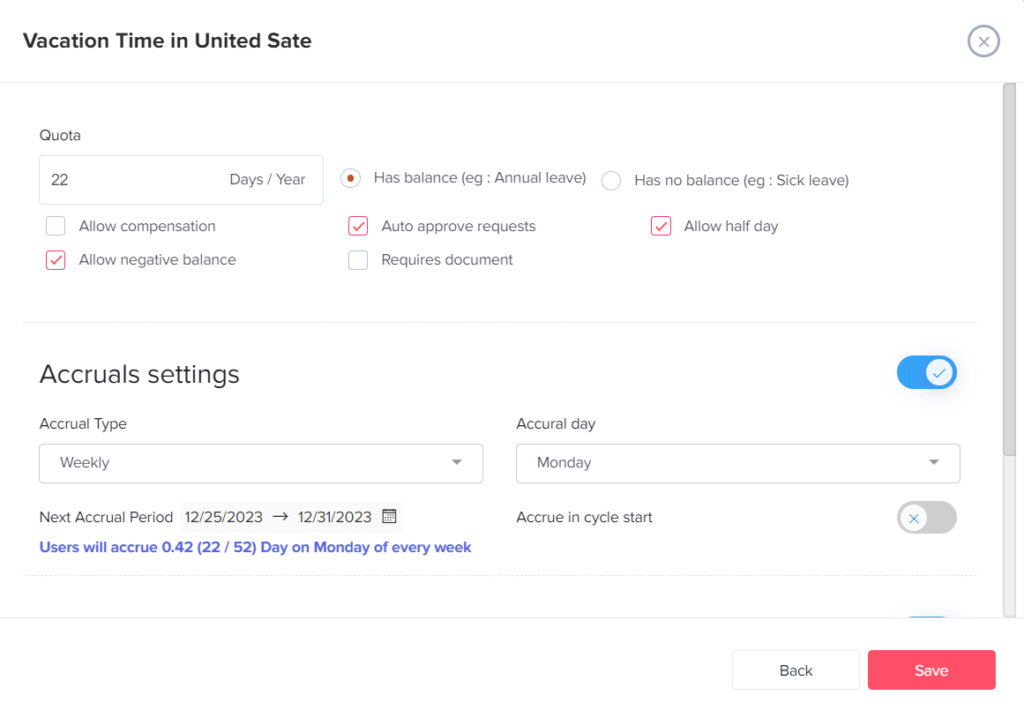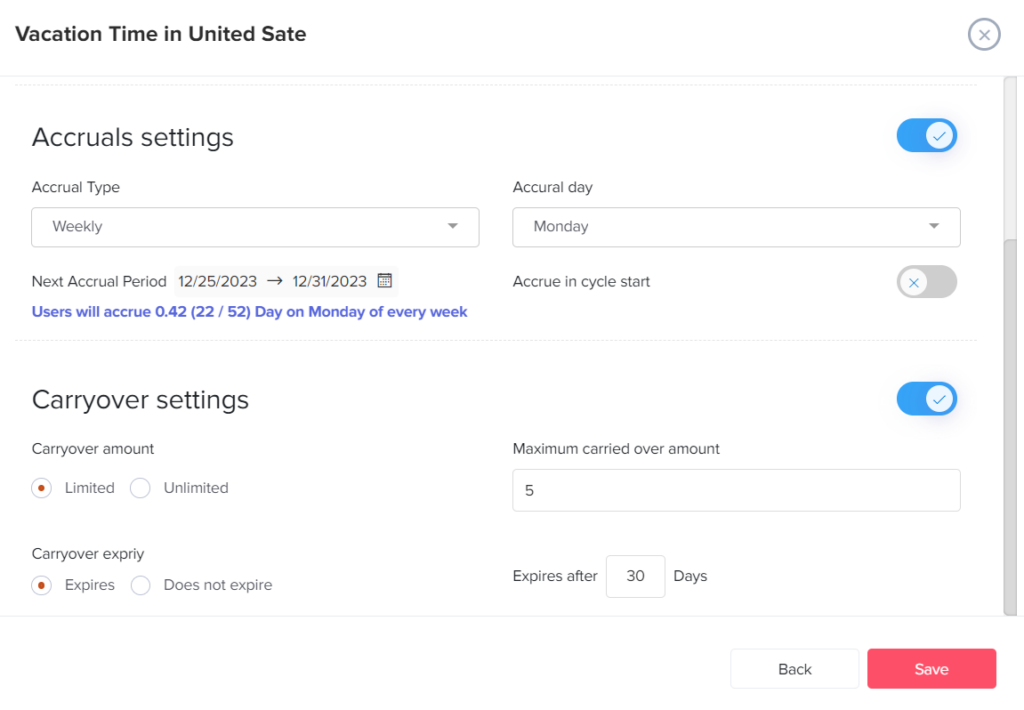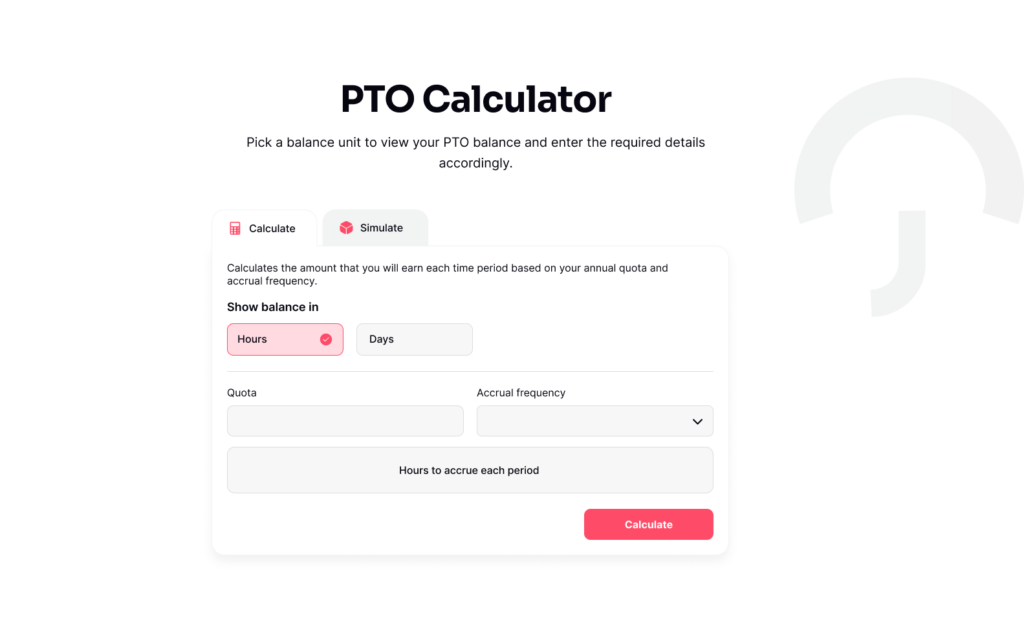When discussing time off balances, the term “accrual” is specifically used to describe the gradual accumulation of time off benefits, such as vacation days, personal leave, or sick leave, over the duration of an employee’s tenure with an organization. This approach contrasts with receiving the entire balance of time off upfront. In numerous workplaces, employees earn a predetermined amount of paid time off (PTO) which is proportionately accrued based on their work schedule, accruing incrementally over each week, month, or pay period they are employed.
This method ensures a fair and steady accumulation of time off, allowing employees to earn leave in a manner that corresponds with their time and effort at work. It’s a system designed to balance the needs of the organization with the well-being of its workforce, ensuring that employees have access to rest and recover in a manner that aligns with their service and commitment to their job.
The Basics of Time Off Accrual
Systems for accruing vacation time are intended to give workers a fair and predictable means to accrue vacation time. With accrual systems, time off accumulates over time and is frequently related to the number of hours, days, or weeks worked, in contrast to lump-sum techniques where employees are assigned a fixed number of days off at the beginning of each year.
Accruals Settings:
This term refers to the speed at which employees accumulate time off. This rate can differ depending on various elements such as duration of employment, specific job position, or the guidelines set by the company. As an illustration, an employee may accumulate 1.5 days of Paid Time Off (PTO) for each month of service.

Day Off provides a flexible accrual system that lets you tailor how employees accumulate their leave balance. You have the option to set up a weekly accrual system, where you can decide the particular day each week that employees will have their accrued leave added to their balance. If you prefer a biweekly schedule, you can arrange for employees to see their accrued leave amount every two weeks, calculated according to their allocated quota. There’s also the monthly accrual option, which allows you to specify a certain day each month when employees will receive their accrued leave. This system offers a range of choices to best fit the needs of both the organization and its employees.
Gradual Earning of PTO:
In contrast to receiving all their Paid Time Off (PTO) days in one go at the beginning of the year, the accrual system allows employees to steadily accumulate their time off as they continue working. For instance, if an employee accrues 1.5 days of PTO each month, by the year’s end, they would have accumulated a total of 18 days.
Carryover Settings:
Various organizations implement rules regarding the transfer of unused accrued leave to the subsequent year. These guidelines influence how employees strategize the utilization of their accumulated time off, determining whether it remains valid for future use or expires at the end of the current year.

When an employee retains an unused balance and the carryover option is enabled, there are several choices available. You can permit them to transfer their entire leftover balance with no constraints, or you can impose a cap by designating a specific quantity of days or hours eligible for carryover. Additionally, you have the ability to decide if this cap should be subject to an expiration period. In cases where an expiration date is set, it’s necessary to determine the duration after which the carried-over balance becomes invalid for the employee’s use in the following year.
Usage of Accrued Time Off:
Once employees have successfully accumulated their time off through the accrual process, they have the opportunity to utilize this leave, adhering to the specific guidelines and policies set forth by their company. These policies often include stipulations about how and when employees can schedule their accrued paid time off (PTO), requiring prior approval from management or HR departments.
This process is designed to ensure that employees’ requests for time off are managed in a way that respects both their personal needs and the operational requirements of the organization. It’s a delicate balance, aiming to provide employees with the flexibility to take deserved breaks while maintaining the smooth functioning of the workplace. Companies typically require employees to submit requests for PTO in advance, allowing for adequate planning and coverage during their absence, thereby minimizing any potential disruptions to the workflow or project timelines.
Day Off PTO Accrual Calculator
This calculation method is designed to determine the amount of time off you’ll accumulate in each specific period, taking into account your annual leave quota and the frequency at which your leave accrues. Essentially, it breaks down your total yearly leave entitlement into smaller, more manageable segments based on your accrual schedule, whether that’s monthly, bi-weekly, semimonthly or monthly or in another regular interval.
This approach provides a clear and straightforward way to understand how much leave you’re earning as you work, allowing you to plan your time off more effectively throughout the year.

1. Calculate
This approach helps in understanding exactly how much leave you’re earning over a given period, based on the overall annual leave allowance set by your employer, thereby providing a clear and systematic view of your accruing time off benefits.
2. Simulate
This tool is designed to project the total amount of time off you will have accumulated by a certain date within the year. It takes into account your initial balance of leave days, your regular accrual rate, and any fixed quotas. By inputting these details, the tool calculates and provides an estimate of the total leave days you’ll have available by your specified date.
This is particularly useful for planning purposes, allowing you to understand how your leave accrues over time based on your current rate of accumulation and any initial time off you had at the beginning of the year.
Conclusion
Accrual systems for time off offer an organised and equitable way to accrue leave, balancing the needs of employers and employees. These tools allow businesses to manage leave in a way that minimises inconvenience and fits with business goals, all while increasing employee happiness and loyalty. As with any policy, effective communication, consistent implementation, and routine evaluation are essential to making sure the system is up to date with the changing needs of the workforce and the organisation.
